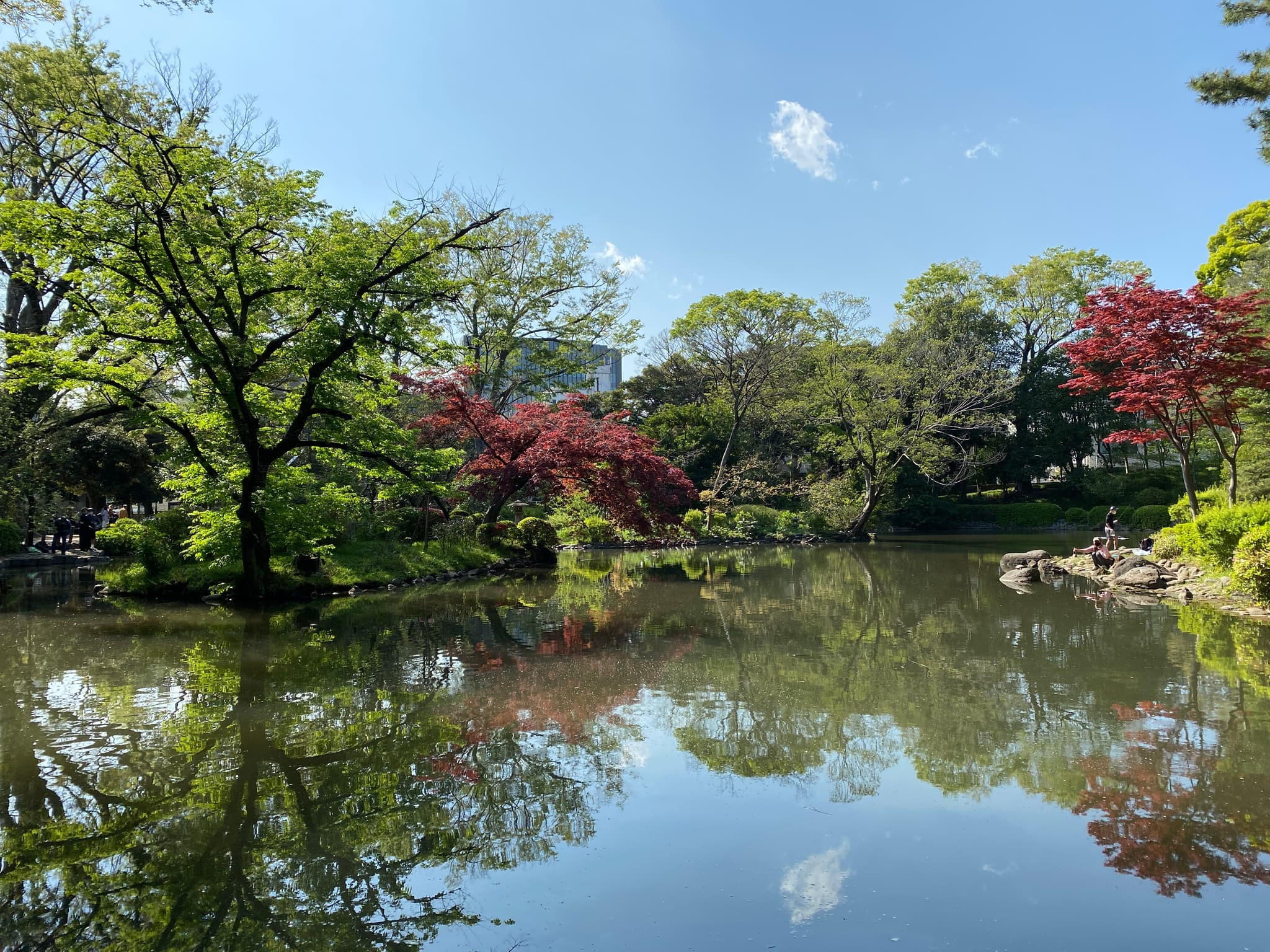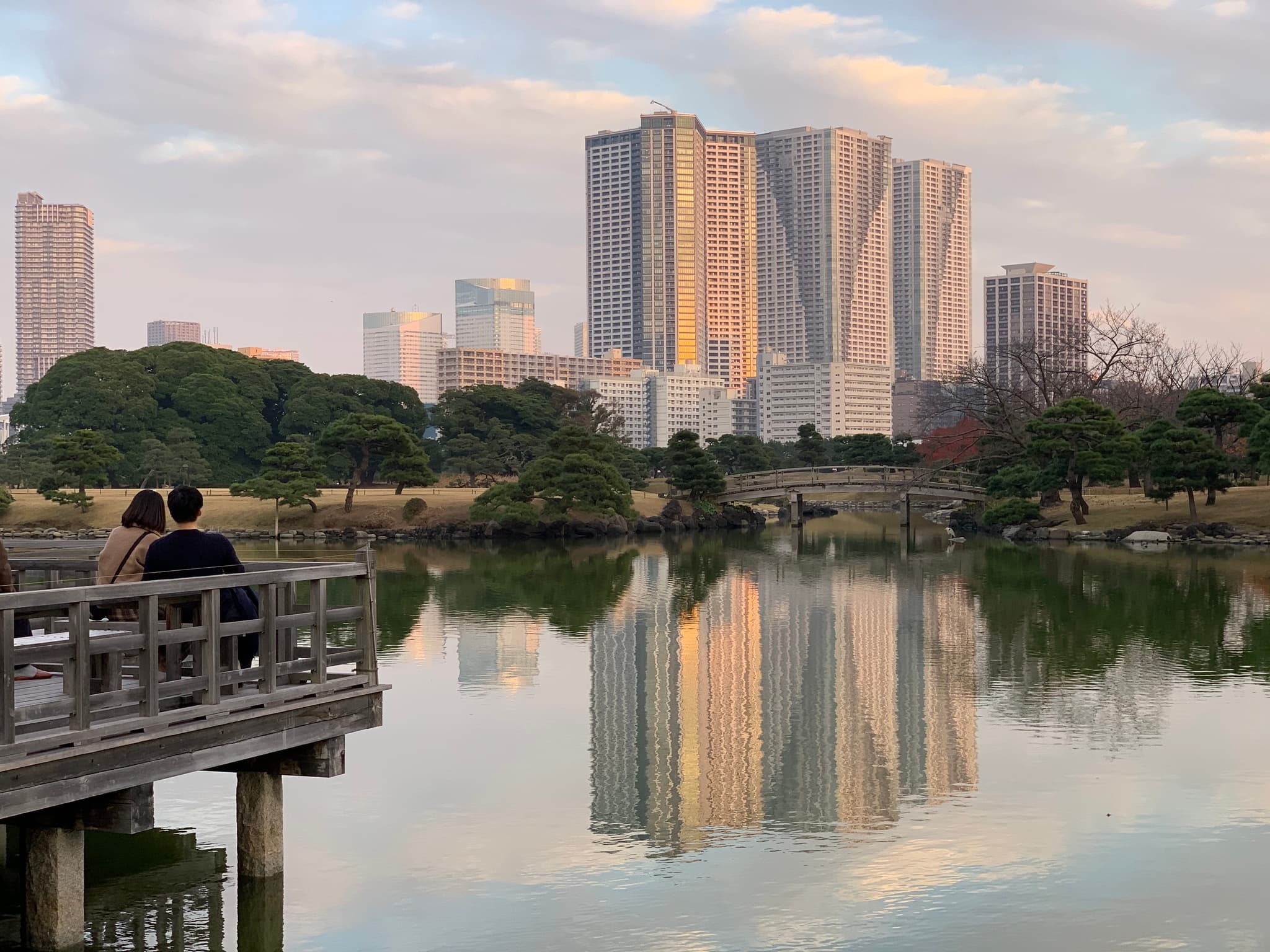Tokyo Travel Guide
Pack good walking shoes and don’t try to see everything. My year-and-a-half in Tokyo gave me a renewed appreciation for walkable cities and for pushing yourself out of your comfort zone.
June, 2024
Joseph Gambino
When you first arrive in Tokyo as a foreigner, the city will likely intimidate you. From the plane, you may have seen how the city spills over the horizon. On the ground, the narrow, winding streets are packed with people and stacked with signs you cannot read. You bump into strangers but they apologize to you. You know no Japanese nor its any of its infamously strict customs, and you’re already positive you’re offending people.
Quietly, Tokyo will reveal itself to be a garden of human life. You’ll soon learn Tokyoites are as kind and generous on the subway as you are welcoming people into your home. With every breath this living city takes its urging you to remember a universal truth many places seem to have forgotten: a city is not its buildings nor its parks but the people who live there.
I’d always heard New York City described as a concrete jungle, but when I first visited, the rectangular blocks and regularly spaced skyscrapers made Manhattan feel more like a space station to me than anything natural. Tokyo, on the other hand, feels alive.
When Japan began to incorporate the automobile into its cities it explicitly forbade most street parking, requiring owners to prove that they have private, off-street parking before purchasing a car.¹ Neighborhood streets remain just as narrow and winding as they were when Tokyo was called Edo. In fact, at the unassuming but impressive Fukagawa Edo Museum, I got to see an old map of Edo and easily found the exact Tokyo street corner I lived on. Tokyo has remained a people-sized city, not a car-sized city.
Roads are so narrow and winding that cars simply can’t go that fast. As a result, people, bikes, and cars share the road comfortably. Neighborhoods lack bike lanes and sidewalks, but Japan has still popularized a bicycle that can hold nearly a whole family. The streets are so safe that young children commonly run errands without their parents.¹ The best part: because streets branch, narrow, and dead-end like capillaries, it’s never feasible for drivers to beat traffic by cutting through neighborhoods. You see the same people every day and quickly carve out your own small town inside the world’s biggest city. Each day, I saw the same children walking to school, the same parents meeting for coffee, the same retired man sweeping the pavement in front of his house, and the same rich man suffering through a seven-point turn because his Bentley SUV was too big for this little world.
Japan is also so walkable because there’s so much to walk too. Zoning laws in Japan, the laws that control what can be built where, are wildly permissive compared to the West. Laws about running a business out of your home are equally entrepreneurial. The tradition of living above the store is alive and well in Japan. That means your next door neighbor might be a high end sushi experience or the apartment above you might be a hip-hop and whiskey vinyl bar.
The built environment is also ever-changing, a result of Japan’s history, geology, and ingenuity. During earthquakes, wooden structures bend and sway. And while wood can burn down, the Japanese discovered long ago they could rebuild wooden homes faster than stone ones.² While construction materials have modernized, the expectation of impermanence has not. In my small neighborhood, I watched three single-family homes razed and rebuilt within a year.
With such easy construction and no rules on what can and can’t go where, neighborhoods grow organically according to the needs and desires of its residents. Exploring these communities can be as delightful and nourishing as browsing my local produce shop, whose name literally translates to “Surprise Shop”. You never know what you’re going to find, but you know it will be delicious and reasonably priced. Tokyo is a lush human wilderness.
All of this is to say, my overall advice for Tokyo is to slow down. Tokyo is best explored on foot. It is also, by some measures, the biggest city in the world. So liberate yourself from any pressure to do it all and instead use the brief time you have to explore the richness of a few places. Go for depth over breadth.
I promise that even just the neighborhood surrounding your hotel will offer everything you could be looking for. Not that I would suggest only visitng one neighborhood. Rather, whatever destinations you venture to, I encourage you to reserve time to simply wander. You will discover gems everywhere.
Four seconds on Google and you can come up with a list of the most beautiful shrines in Japan. They are indeed stunning and well worth visiting, but, as such, they are also overrun with tourists. Which means, of course, they are not the shrines frequented by locals. You’ll find those by happenstance.
Temples and shrines in Japan are like snowflakes, beautiful and remarkable in their own way and sprinkled across the city. Wander through your neighborhood and you’ll find them nestled into any and all available space, often squeezed between new construction (sometimes relocated right onto the roof). During the evening rush, you will observe tired office workers emerge from the subway and duck in for a quick prayer, simply as part of their commute. Do make the time to see a couple of the grander ones, but please also make time to appreciate a few you can actually experience, where you can, like the locals, stop for a moment of reflection.
In the Fukagawa Edo Museum, a kind and generous English-speaking tour guide led us through a full scale replica of an old Edo neighborhood and taught us that each neighborhood contained a single stone building – for storing the community’s rice. This way, when fire swept through the neighborhood, the food supply remained intact. That museum is an excellent substitute while the Edo-Tokyo Museum is closed for renovations, presumably to make it look even more like Blade Runner. It’s also down the street from lovely tea shop.
Starchitect Kengo Kuma incorporates this rich history into much of his work. His design of Tokyo’s Olympic Stadium uses wood from all 47 prefectures of Japan.³ You can see his work and more at Archi-Depot, a concept truly unique to Tokyo. Tokyo is filled with architecture firms – Japan boasts more architects per capita than any other country⁴ – but their offices are too small to store all their architectural models. The solution: Archi-Depot, essentially a dressed-up self-storage. Architects retain access to their models while they’re put on display for you!
There is quite a bit of work for all these architects. A legacy of fire and reconstruction, homes are not the investment vehicles that they are in the West. The land can be, but the structure is not. So it’s quite common that when you buy a single family home in Tokyo, you tear it down and build what you want. In my small neighborhood, I watched three single family homes razed and rebuilt within a year. And with few zoning restrictions, buildings can be rebuilt into anything.
Tokyo is Surprisingly Affordable
Tokyo’s cost of living is surprisingly low compared to the world’s other major cities. Housing supply keeps up with demand. Throw in socialized healthcare and Tokyo is a great place to try and start your own business. While at my consulting job in Tokyo, on a project for an insurance firm, I learned that an impressive one in sixteen Japanese citizens is a business owner. The dense, walkable neighborhoods mean these businesses have plenty of competition, keeping quality high and prices low. The result: you cannot find a bad meal in Tokyo, and you won’t have to spend a lot to eat well either.
I say this with no exaggeration: there are no bad restaurants in Tokyo. It seems to me that every city’s food scene has a floor, the lowest quality food a place can serve and still stay in business. Chicago’s floor, I’m proud to say, is quite high. Some places I’ve visited (ahem Omaha), well… their floor is in the sub-basement. Tokyo’s is in the stratosphere. You can try new foods and whole new cuisines risk-free.
Japanese food is diverse and often highlights textures Westerners are unfamiliar with. It’s perfectly okay to try something and not like it, but a little adventure is necessary to fully explore Japanese cuisine.
On a recent trip, I convinced my sister and brother to try sea urchin, but I messed up. Sea urchin was not in season, and I failed to notice that the price on the menu was a little too low. The best food discovery I made in Japan was good sea urchin, but the worst was cheap sea urchin. My siblings were not happy with me. They could barely keep it down and declared it to be one of the worst experiences of their life. But they lived, and, confident that nothing could be worse, were quite open to trying basashi the next night. This time they thanked me.
Tokyo is also an international metropolis; Japanese people do not eat only Japanese food. Time spent in Tokyo is a chance to try some of the best food from around the world. Below are some of my favorite places, but please explore yourself too. If you eat at a different restaurant in Tokyo every day for breakfast, lunch, and dinner, you can visit each one in only 125 years.

Photo by Google Maps user Takuro Arai
Azabu Kawakamian
Soba is my favorite Japanese food. It’s a summer food. The noodles are served chilled, and you dip them in their sauce. Soba noodles are so flavorful that you end the meal with a tea made from the noodle broth itself. Just try to sound a little more refined than me when I, questioning this, referred to the tea as “pasta water”. At Azabu Kawakamian in particular I recommend their walnut soba course meal.
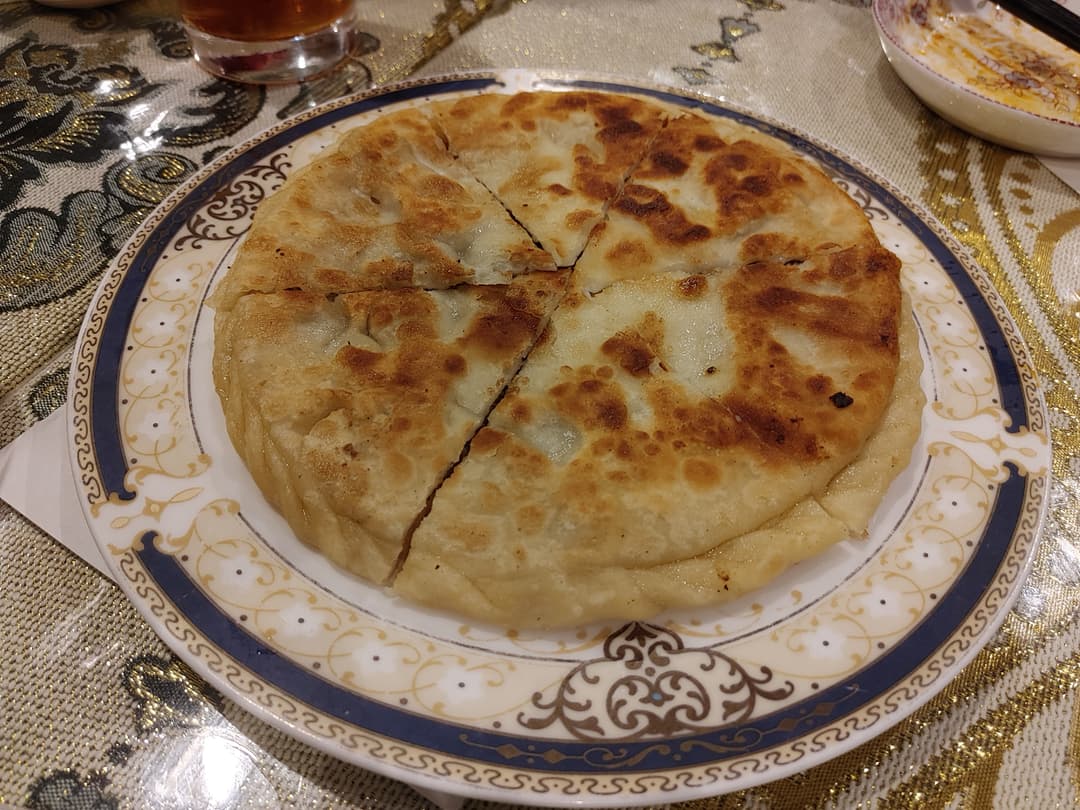
Photo by Google Maps user K Matsu
Silk Road Tarim Uyghur Restaurant
It is a rare experience to encounter an entirely new cuisine, even rarer to encounter one that, sadly, may not exist for much longer. Uyghurs are the mostly-Muslim ethnic group living in Eastern China who are victims of active genocide at the hands of the Chinese government. Their food is a delicious blend of Turkish, Indian, and Chinese influences. Just one meal at Silk Road Tarim offers such a diversity of flavors that you will leave fully aware that the world is at risk of losing a particularly beautiful culture.
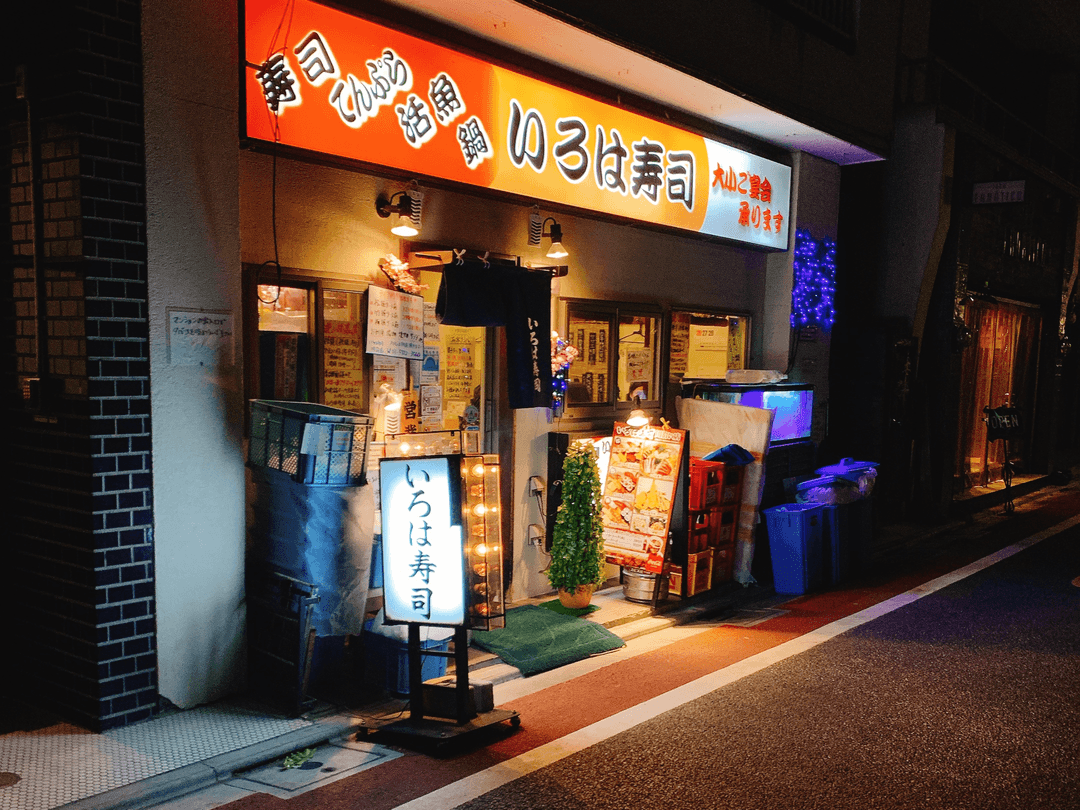
Photo by Google Maps user T S
Iroha Sushi
We all know the one food you want to try in Japan. You can treat yourself to high-end, omakase sushi. I have; it’s delicious. But you don’t need to spend a lot to eat great sushi in Japan. Usually filled with Japanese twenty-somethings, this is my favorite, casual spot.
Iroha is the center of Naka-meguro, a neighborhood I could happily spend months in without leaving. Put your name down, and while you wait for your table you can stroll along the Meguro river, do some shopping at Migratory have a drink at Sidewalk Stand or Antonic, or whatever you like. Naka-meguro is a joy to explore.
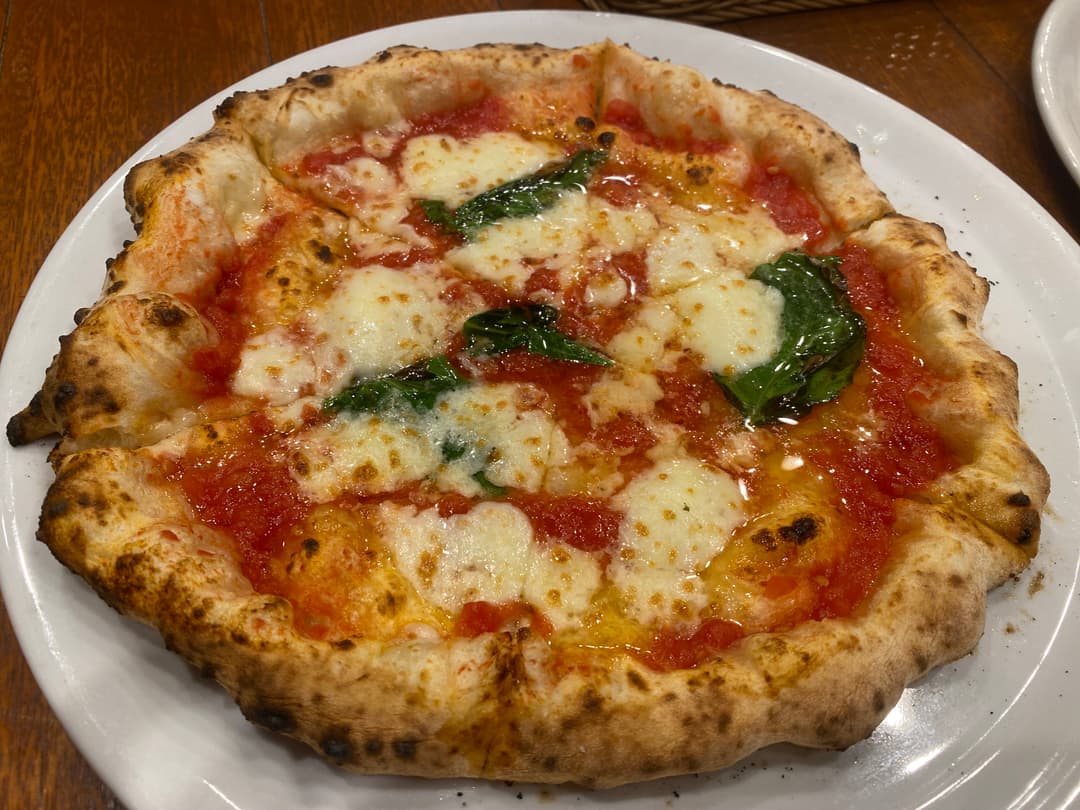
Photo by Google Maps user 봉봉즈(bongbongz)
SAVOY
When people ask me what food I miss most from Japan, they look at me quite funny when I answer honestly, pizza. “Pizza is not Japanese food,” you might think. Well, you’d be wrong.
The Japanese have adopted Neapolitan pizza and applied to it their infamous work ethic, dedication, and artistry. Most chefs must apprentice for at least a year before they are allowed to make pizza for customers. These chefs take their craft, but not themselves, seriously. Every chef I met was goofy and friendly, especially Bun san, the chef extraordinaire of Savoy, who so proudly and genuinely relishes in making his guests happy.
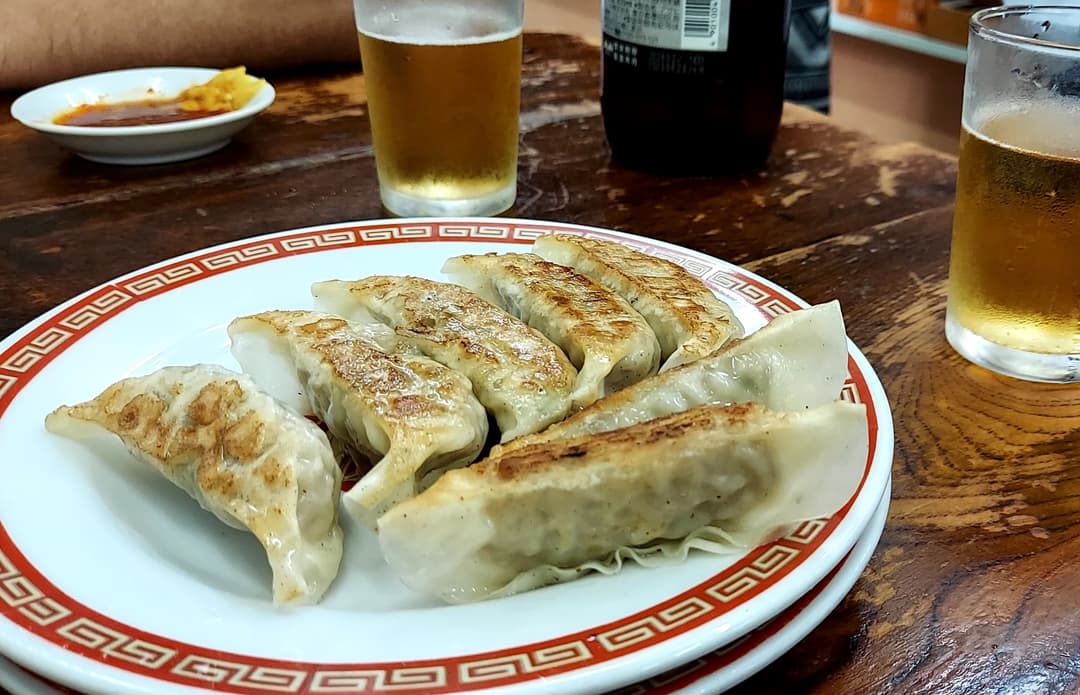
Photo by Google Maps user t saito
Kameido Gyoza
I would buy a flight to Tokyo just to have one more meal at this place. Kameido Gyoza only serves gyoza, five to a plate. At the end of your meal they count up your plates and hand you a bill.
The main branch is on the east side of Tokyo, in Koto City, down the river from Tokyo Skytree. East Tokyo was less destroyed during the war and seems to be less popular with expats. In contrast West Tokyo, which has more foreigner-friendly housing and international chains, the neighborhoods to the east retain an older and purely Japanese character that I mostly experienced outside of Tokyo.
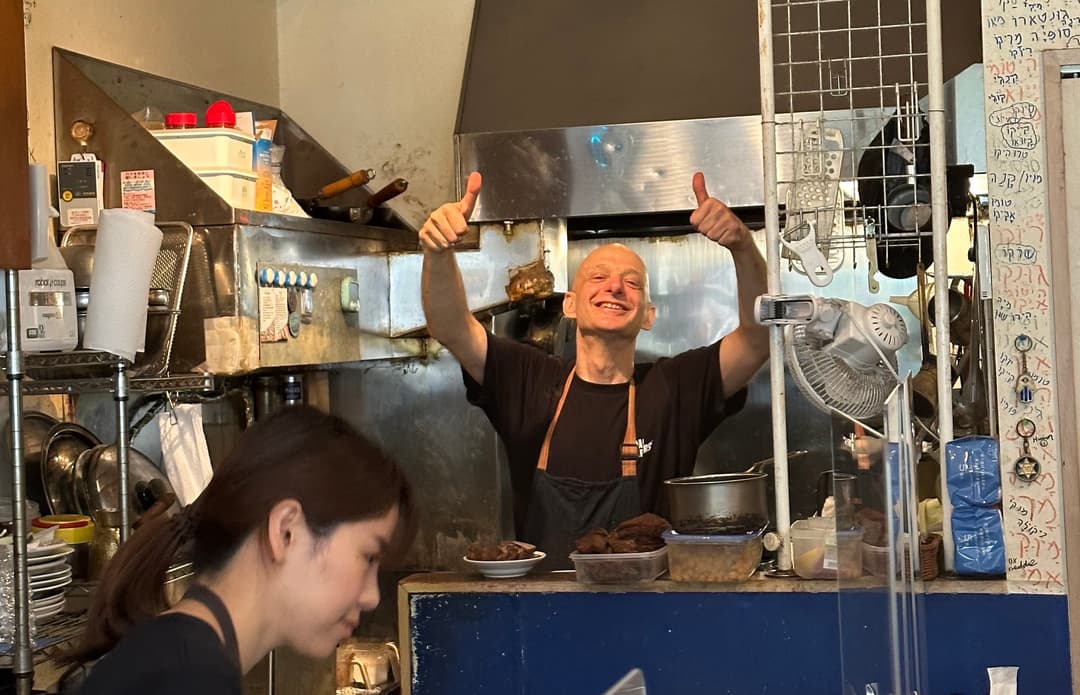
Photo by Google Maps user Jamelia Jones
Ta-im
Tokyo is filled with small, narrow restaurants with only counter seating. Part of the fun of these places is that you can banter with the chef while they make your meal. In fact, good conversation is not just expected, but part of how chefs of small shops compete for your business. That is, of course, only if you speak Japanese.
At Ta-im, named for the Hebrew word for delicious, you don’t just get stupendous Israeli food, but a chance to experience this part of Tokyo culture in English. Chef Dan Zuckerman is goofy, kind, and welcoming. He’ll likely want to know if you’re Jewish, and if applicable, while brandishing a chef’s knife, will graciously offer take you back into the kitchen and convert. I recommend the lamb shakshuka.
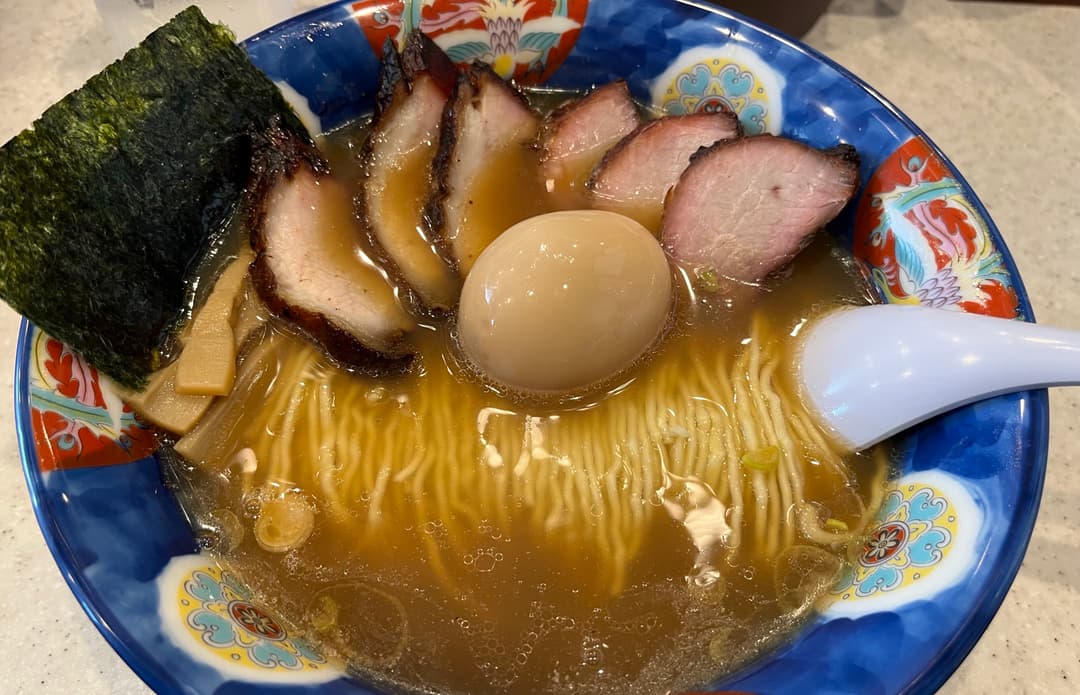
Photo by Google Maps user nao nao
Tantantei
Venturing out of central Tokyo – into the “suburbs” – is a fun opportunity to imagine what it would be like to really live in Tokyo. These mostly single family home neighborhoods are where you would likely settle if you were raising kids in the biggest city in the world. Smaller, quieter, and greener, these little towns are still delightfully dense, walkable, and filled with great food.
You can find Tantantei off a winding park that follows the Kanda river, dotted with playgrounds and little league fields. Still accessible by subway, it’s not a trek, but I doubt many tourists would venture this far. Go for a quieter afternoon and a glimpse into the safe, park-filled communities that grant Japanese children so much freedom.
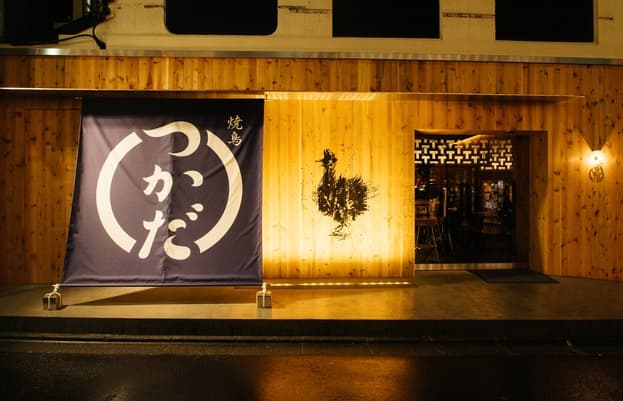
Photo by Google Maps user Yakitori Tsukada
Yakitori Tsukada Nakameguro
Yakitori, which literally translates to grilled chicken, is small portions of skewered meat and vegetables. They can be found as an izakaya, a small, quite casual bar with a menu of small plates for sharing, or formal sit-down restaurants. Tsukada is one of the nicer options and is my friends’ favorite.
Some yakitori musts are tsukune, chicken meatballs with an egg yolk dipping sauce; reba, chicken liver; hatsu, chicken heart; and torikawa, “strips of fatty chicken skin, which have been grilled until crispy.”⁶ In many places, you can simply ask for omakase, and the staff will feed you until you are full. A good yakitori place will leave you wondering why we waste so many delicious chicken parts here at home.
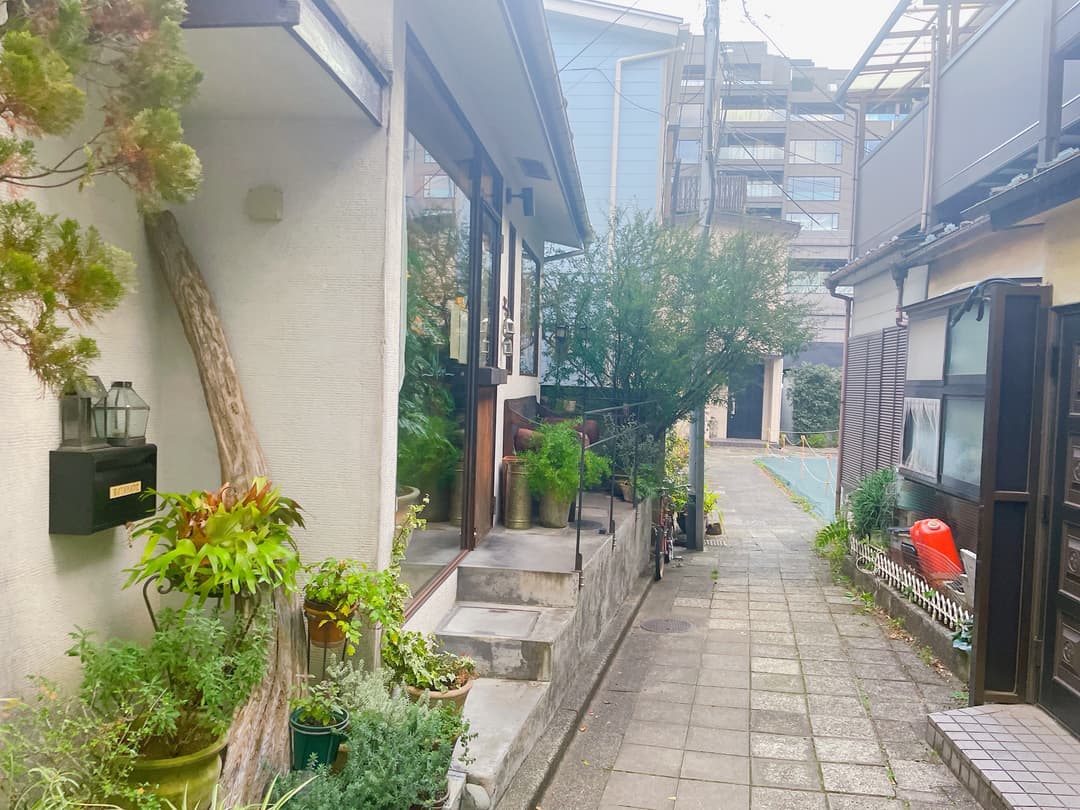
Photo by Google Maps user undefined
Nem Coffee & Espresso
Down a narrow walkway off the enchanting Arisugawa-no-miya Memorial Park, NEM is a haven, a refuge. The path towards it will seem like you’re walking to someone’s home, and that is exactly what it feels like inside. Strictly wifi and device free, and decorated like you’ve found a modern, secluded cabin, NEM is for enjoying your coffee with a friend or with a book. I recommend whatever beans he recommends plus the egg salad sandwich.
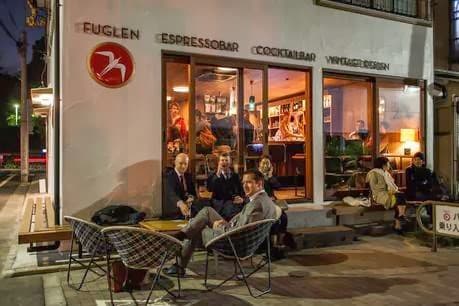
Photo by Google Maps user Fuglen Tokyo
Fuglen
My notes for Fuglen just read, “damn good coffee.” Tokyo is world-renowned for its coffee scene. In particular, its pour-over scene – which is called “hand-pour” in Japan – and Fuglen is my favorite hand-pour destination. I’ve been fortunate enough to aslo visit one of their original locations in Oslo, and, lucky for you, I like their Yoyogi spot better. Near the park and along a lovely, pedestrianized street, Fuglen is likely to be popular but well worth the wait.
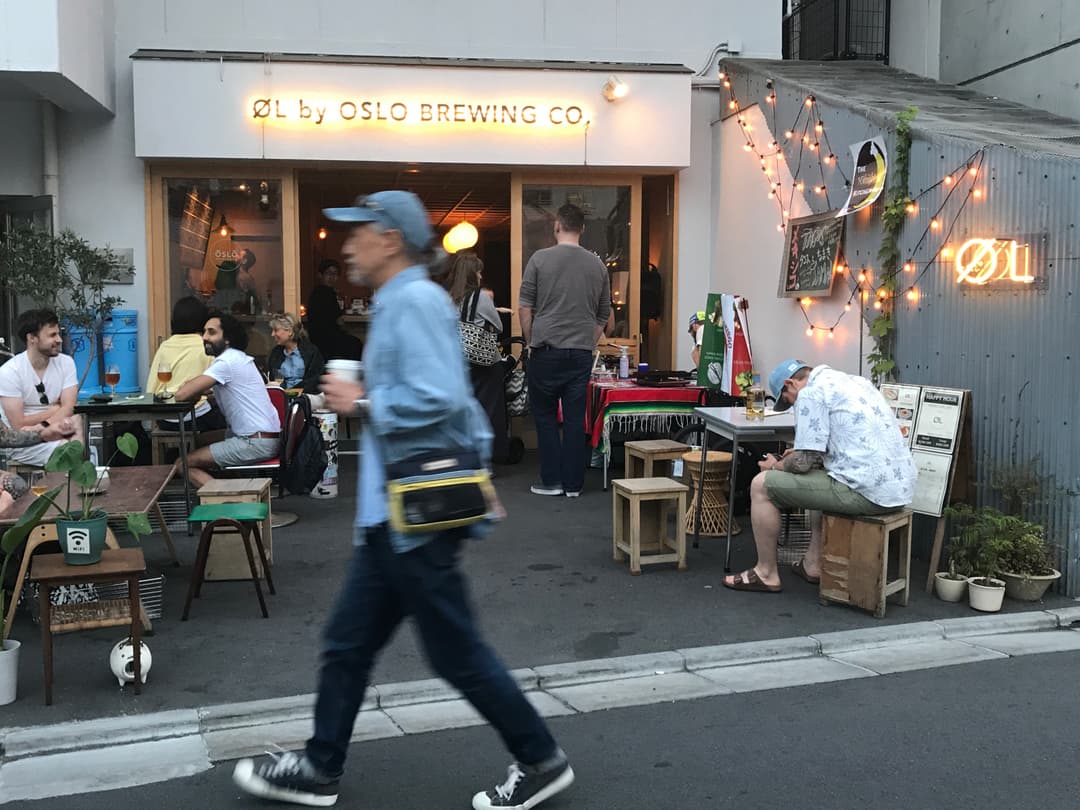
Photo by Google Maps user undefined
ØL
Named for the Nordic word for beer, ØL is your standard Norwegian craft brewery and Mexican taco shop, a combination that would seem out of place in any other city. The beers are top notch, the tacos superb. Surprising too considering it’s in the heart of Shibuya, ØL has some of the most generous patio seating in Tokyo.
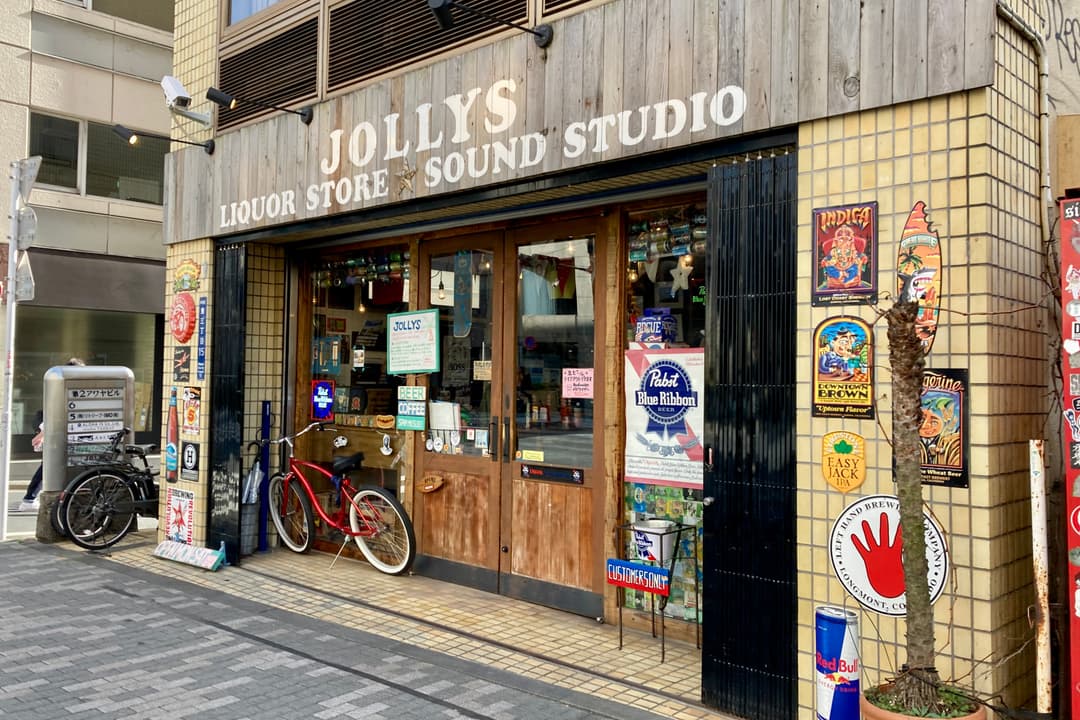
Photo by Google Maps user undefined
JOLLYS
If you’re curious about life as an expat in Tokyo, there’s no better place to start than Jollys. Part liquor store part bar (or a “slashee” as Chicagoans might say), Jolly’s tries to collect as many cheap, shitty beers from everyone’s home country as they can. They have PBR! And the worst beer I’ve ever tried: Victoria Bitters. Luckily, a jovial Australian was kind enough to take it off my hands. At its core, Jolly’s is a place for meeting people.
Tokyo is an absurdly dense city by Western standards. For many, the first image of Tokyo that comes to mind is the famous Shibuya Scramble Crossing (featured in every montage of how “the world is more fast-paced than ever”), but busy intersections outside of train stations are not where people spend their time. Density does not mean crowded, it means accessible.
It’s not only fresh sushi that Japanese citizens are used to having at their doorstep, but also schools, healthcare, jobs, government services, places of worship – everything that makes a society. Recently, Western urban designers have been advancing the concept of a 15-minute city, a city “in which most daily necessities can be easily reached by a 15-minute walk or bike ride from any point.”⁵ By intentionally retaining their original layouts and not reorienting their cities around cars, Japan far exceeds this standard. The results are far from creating a crowded maze. In Japan, 80% of kids walk to school, and researchers have found that urban children actually have more independence than rural kids.¹
Japanese people are proud of their culture but also aware of its specificity and uniqueness. They don’t expect foreigners to behave as locals and genuinely do not mind or judge when they do not conform to their society’s customs. However, to help you return their hospitality, these few points are worth remembering.
Before I left for Japan, so many people – none of whom had ever been to Japan – told me all these things I should and shouldn’t do with my chopsticks. It didn’t take long after arriving to realize Japanese dining etiquette is not as strict as we make it out to be in America.
When not eating, it’s better table manners to leave your chopsticks resting horizontally on the rim of your bowl, but leaving them in the food resting on the edge of the bowl is fine too. What is impolite is to stick your chopsticks into your food with the ends of them pointing up like you’re making the peace sign with your fingers. This resembles how incense is displayed at funerals, and so while it’s not strictly offensive, it is quite visually off-putting to Japanese eaters.
Related, you should never pass food to another person by handing it from chopstick to chopstick. If you want to pass food to a friend, do so using a small serving dish. The only time Japanese people pass from chopstick to chopstick is during a cremation ceremony. Cremation in Japan is done at lower temperatures; the bones remain charred but intact. Immediate family members then use large, ceremonial chopsticks to pass each bone from person to person and into an urn. I’m quite grateful for a close friend who shared his experience of this ceremony with me. He found it an overwhelmingly emotional but essential part of the grieving process. But, if you and a friend are excited about how much better you’re getting at your chopsticks and decide to pass a piece of sushi back and forth, you’ll be reminding every Japanese person in the restaurant about the time they were intimately involved in cremating a loved one.
If you’re not well practiced with your chopsticks, my advice is to remember that chopsticks aren’t intended to transport over long distances. Notice how Japanese people pass food by serving directly onto small dishes and often bring bowls up close to their mouths. When you get good at chopsticks, they become a versatile set of tongs. Take notice of how much easier it is to eat thinly sliced Japanese salads than chicken ceasers with romaine leaves the size of your face. No matter how practiced you are, don’t be too proud to take advantage of how Japanese chopsticks are distinct from Chinese chopsticks: they’re pointy! If a shiitake is too slippery, just stab it! Japanese people do it all the time.
The only truly offensive thing you can do in Japan is wear your shoes inside someone’s home. The evolved common sense in Japan is that the undersides of shoes are incredibly dirty. The Japanese are patient and kind, but walk into someone’s home without removing your shoes and you will quickly learn just how innate their aversion is.
In May 2020, early into the new COVID work-from-home days, a colleague and I met up for lunch. Covid hadn’t been spreading very well in Japan. Case counts in Tokyo were still quite low compared to other cities in the world. From my perspective, an already high prevalence of masks and a cultural avoidance of physical touch seemed to be helping, but my coworker shared with me another theory she’d read recently. “They think it’s because we take our shoes off before we go inside. Makes so much sense, don’t you think?!”
No, not at all, I thought as I nodded along in agreement anyway. Yes, there’s plainly some cultural pride here, but her comment taught me how everything we humans learn – even what we consider “common sense” and consider to be based on logic – we learn socially. We learn from each other. And the Japanese have learned that the undersides of our shoes are so dirty they can make you sick. So while it may often seem trivial, it’s not. Take your shoes off.
Usually, it’s obvious. In a temple or restaurant, you’ll see a bunch of other tourists ahead of you taking their shoes off and putting on slippers, so you know you’ll need to too. Any place where you will be expected to take off your shoes will have a very clear threshold, usually a step up onto a wooden platform where you can transition into slippers. It can be less obvious in dressing rooms. Look down as you enter a dressing room. If the floor material changes, say from tile to carpet, you are expected to remove your shoes and step onto the carpet in your socks. If you don’t notice the threshold, rest assured a salesperson will come sprinting over to point it out to you.
An onsen is a public bath fed by a natural hot spring. A chain of volcanic islands, Japan has a lot of hot springs. The baths are separated by gender as you must be nude. There are no exceptions. It is perfectly reasonable for this to make you uncomfortable, but I encourage you to try.
When I was 22 and miserable at my first job out of college, I signed up for an improv class to inject some joy into my life. The instructors encouraged us not just to work up the courage to face our fear but to follow our fear. Pursue what makes us uncomfortable so that we may grow from confronting it. I’ve always been someone who would agree that it’s healthy to put yourself outside of your comfort zone. But not until onsens did I internalize exactly how the transformation occurs.
I would not say that I was ashamed of my body, but I was never terribly excited to take my shirt off at the beach either. Full nudity only amplified that reluctance. My first few times at an onsen, you could pick me out as one of the beginners trying to use the small, handed-out washcloth to strategically cover myself.
But onsens are everywhere in Japan and onsen culture is pervasive. If you want to make friends you’ll end up at a lot of onsens. So I kept going. Over time, my hesitation withered away. It was not as if I had learned to embrace my body. Rather, I seemed to forget that it was something I could be embarrassed about. The nudity was no longer something I noticed when walking into an onsen.
Now, I miss onsens – how relaxing and lovely they are – and their culture. We all look the same naked; nudity is just not a big deal. And the lesson has been laid bare: immerse yourself in your insecurity and you can rid yourself of it. So if the idea of visiting an onsen makes you nervous, good. You likely have other things in your life you’re uncomfortable with as well, and an onsen is an opportunity to practice confronting them.
The only important thing to know about onsens is that while they may be referred to as baths, they are not for bathing. You will shower before and after. The showers are usually traditional, in that you’ll bathe while seated. These likely won’t be the motions you’re used to, but the showers are communal, so just mimic what everyone else is doing.
You may have heard that people with tattoos aren’t allowed in onsens. This used to be true, but attitudes are liberalizing. Many of my Japanese friends have tattoos and they visit onsens just as much as everyone else, which is to say, all the damn time. Besides, when you walk in and pay admission you’re clothed. Once inside, no one’s going to say anything.
My best onsens experiences were always after a long hike, before hopping back on the train to get dinner in town. It can be tempting to eat first, but I found dinner was always much better after healing my tired legs.
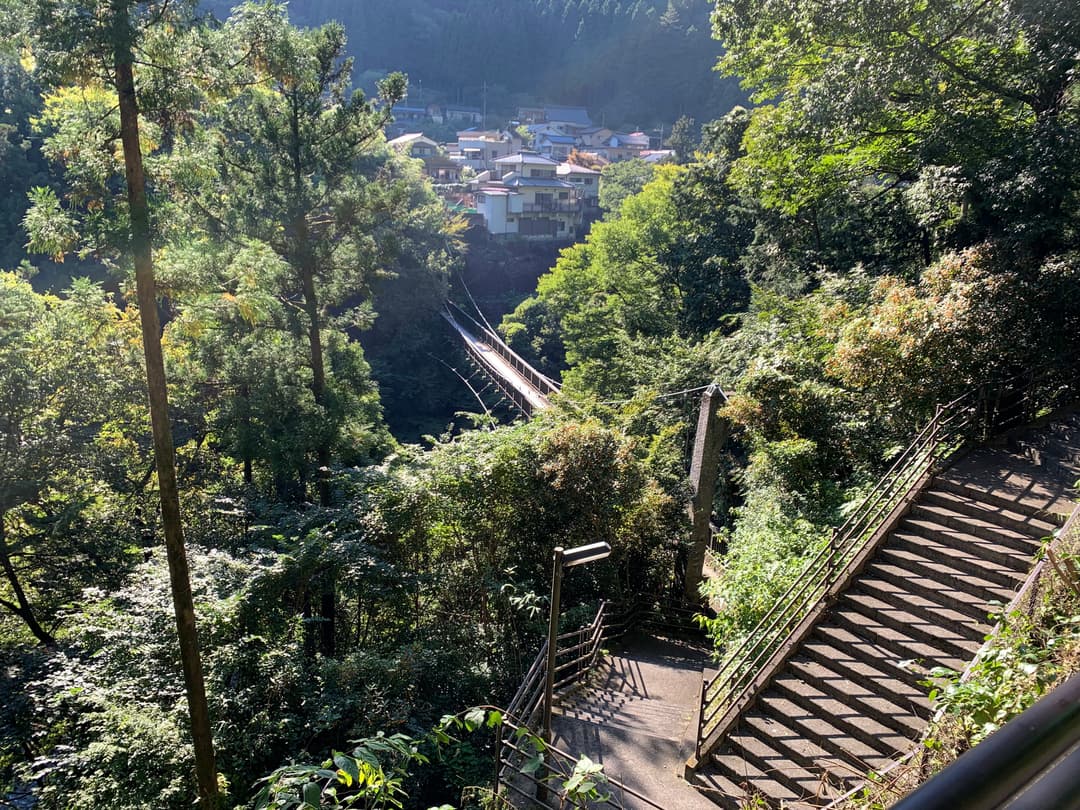
Photo by Google Maps user 木下正俊
Moegi no Yu Onsen
Ride the subway two hours heading west and you will end up on the Ōme Line, snaking along the Tama River. The river valley offers everything. It’s the first place I went outdoor bouldering and where I regret not planning a kayaking trip.
Moegi no Yu Onsen is in Oku-Tama, the end of the line, and is where we would end most days of hiking from mountain-top shrine to mountain-top shrine. You can eat there or hop on the train and get dinner back in Tokyo. Even if gets late, the sun begins to set on your hike, and you realize you forgot to pack flashlights, you will still have time to soak. Trains run until midnight.

Photo by Google Maps user K Okajima
Nasuonsen Shikanoyu Hot Spring
At the base of a volcano – which you can hike! – this onsen is my absolute favorite. The smell of sulfur is overwhelming at first, but soon your brain will tune it out and you will forget you ever noticed it. Your skin will never be softer. I wish I could hike and soak here every weekend.
The baths are labeled by temperature. I suggest starting with the lowest. And I can only speak for the men’s bath, but you’re likely to find elderly locals egging on tourists to try the 48˚C tub. I got as far as my big toe.
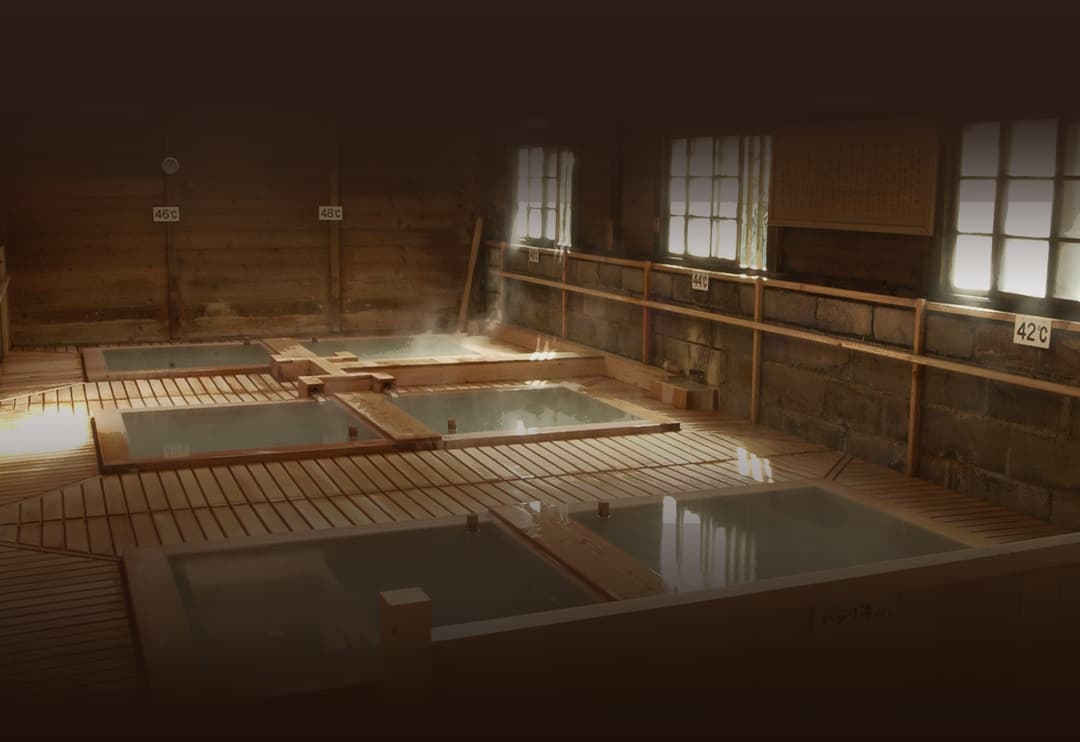
Photo by Google Maps user Nasuonsen Shikanoyu

Photo by Google Maps user 腐爺
Yukemuri-no-Shou
This grand onsen resort is particularly well-known for its food and was recommended to me by a friend who is also particularly well-known for her food. Even as someone who has limited stamina for hot baths, I recommend budgeting a whole day. You will not want to leave. Yukemuri-no-Shou offers such a variety of baths, spas, and napping rooms that you will feel genuinely adventurous in your relaxation.

Photo by Google Maps user my.
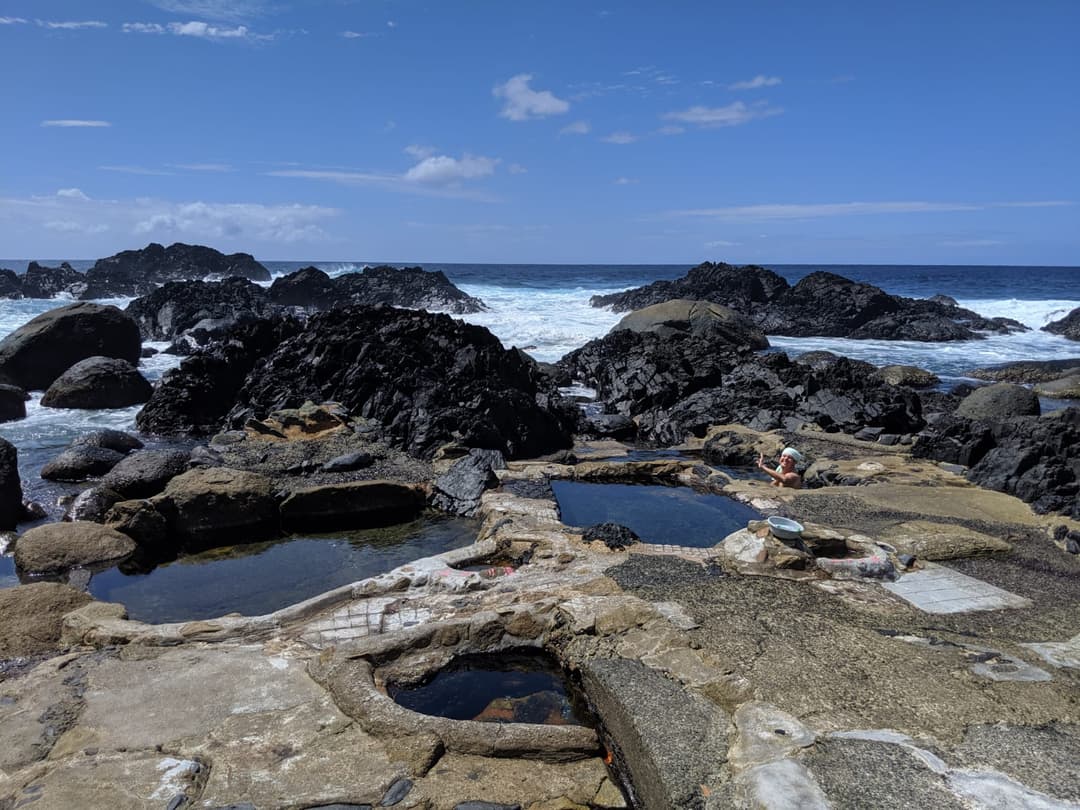
Photo by Google Maps user Cuyler Moon
Hirauchi Kaichu Onsen
This bath is nowhere near Tokyo, but it’s worth mentioning. It’s one of the rare, mixed-gender onsens – a fact my Japanese friends conveniently forgot to mention. But I’m glad they didn’t, because if they had I likely wouldn’t have gone.
All onsens are fed by natural hot spring, but rarely do you get to see the spring itself, to feel it bubble out of the earth like placing your hand over the jet of a hot tub. Even rarer do you need to schedule your visit for when the tide is out. The whole experience felt primal, especially since Hirauchi Kaichu Onsen is not a formal business but just some warm tide pools found the rocky shoreline. Locals have been relaxing here for over 400 years.
Attendees naturally segregated themselves and the rocks provided decent privacy. When traveling around rural Japan, if you find yourself near something similar, it will be very worth checking out.
The Tokyo subway map is, shall we say, overwhelming, but that’s not what can make traveling around Tokyo so confusing. Subway stations in Japan are vast complexes, filled with shops and restaurants, with many different routes to reach the same place. The newest line, the Ueno Line, is so deep it can take over ten minutes to reach your platform. Platforms are so long that you can end up on the opposite end of the neighborhood if you take the wrong staircase up to the street.
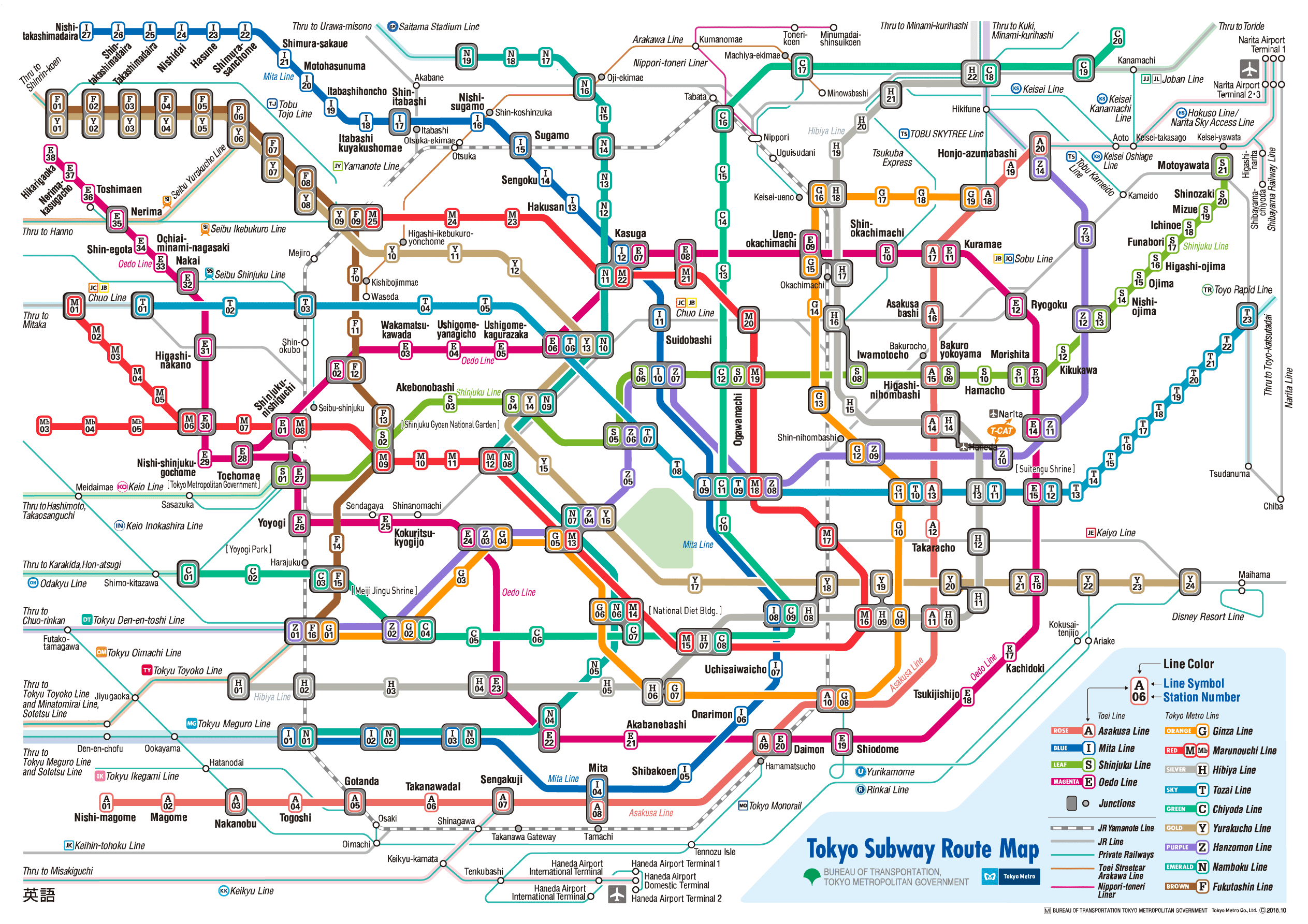
If this looks confusing, wait till you see it in Japanese.
Google Maps takes all of this into consideration, pioneering some helpful UI features that are unique to Japan: which entrance or exit to use, how long to reach the train, even which car to board for the fastest transfer. You may get a little turned around from time to time, but you’ll make it. And all of this can be timed to the minute because Japanese trains are never late.
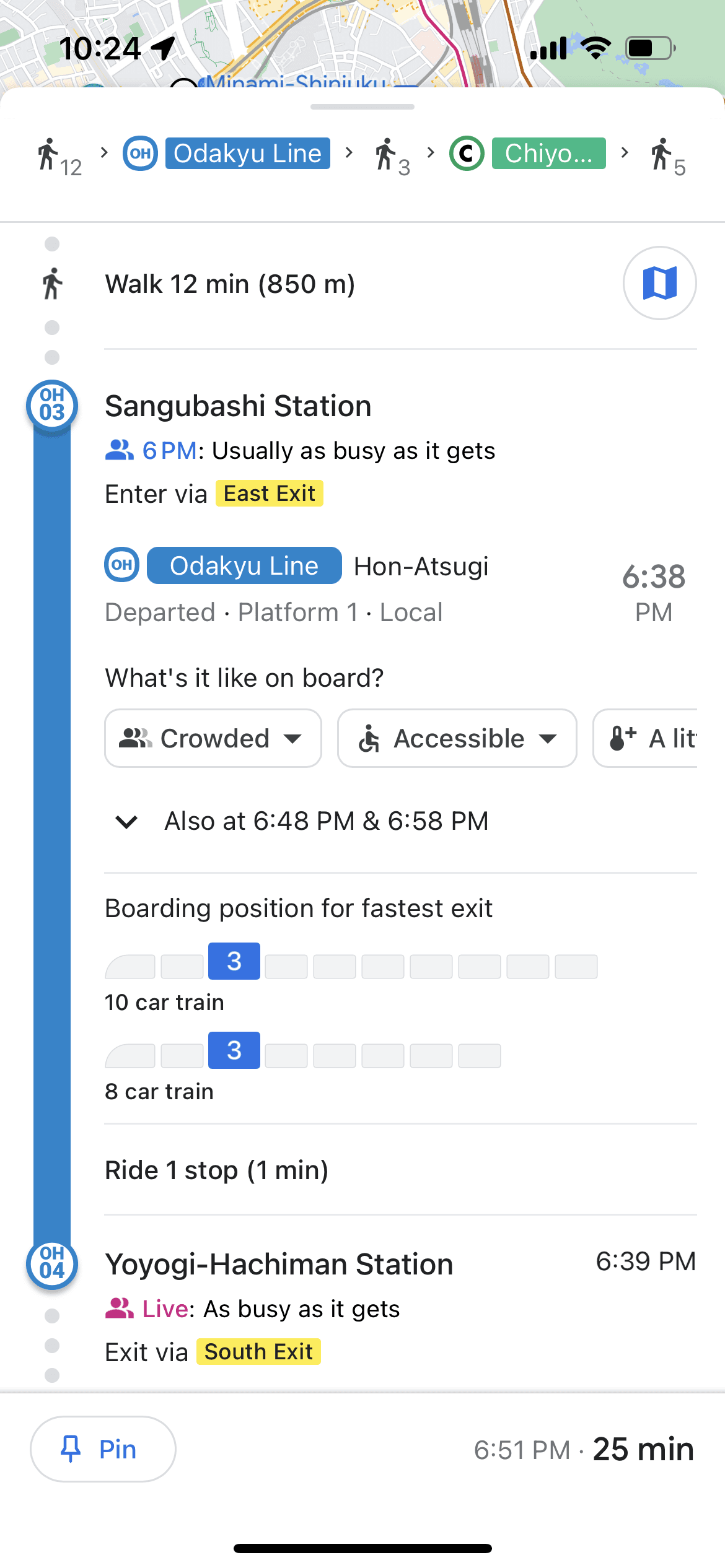
The colors of "East Exit" and "South Exit" match the signs in the station. Everything is easier to find when you board the suggested cars.

The station complex is visible when you zoom in. The suggested exit puts you right at the crosswalk you'll want.
Even when you do manage to get lost, don’t fret. It’s an excellent opportunity to appreciate how ingrained omotenashi is into Japanese culture. If you need help, simply approach the first person you can find, point to your destination on Google Maps, and ask:
Sumimasen, kore wa doko desu ka?
Excuse me, where is this?
On more than one occasion, the person I asked, lacking the English to explain how to get there, kindly took me there themselves.
While Google Maps is best for getting around, you may want to use Apple Maps for picking where to go. Apple Maps incorporates reviews from Tabelog, the Japanese equivalent of Yelp. My friends and I were ecstatic when we discovered this. We knew that reviews on Google Maps were more often written by foreigners, but we used it anyway because Japanese websites are notoriously cumbersome for foreigners to use. Tabelog was no exception.
With local opinions at your fingertips, just know that the Japanese are unforgiving and specific in their opinions of food. Perhaps they’re just used to having it so good. I was taught that below a 3.5 on Tabelog was inedible and above a 4.0 was unheard of, with a realistic range of between 3.60 and 3.90. (Yes, these reviews go out to two significant digits.) Quite infamously, the restaurant from Jiro Dreams of Sushi is currently sitting at a 4.00 out of 5.
I rank Ramen Beast as the second most essential app for exploring Japan. With reviews in English, Ramen Beast is a curated map of the best ramen shops. The reviews are lovingly crafted with histories of the chef, shop, and signature dishes.
There are just so many ramen shops in Japan. Without Ramen Beast, you’d have no way of deciding where to go. Reviews are given out only in half stars, but, like Tabelog, ratings are precise and stingy. Below a 3.5, don’t bother. At a 3.5, damn good ramen. A 4.0 or higher, expect a long line because this place will be incredible.
With all food in Japan, but especially ramen, you don’t have to spend a lot to get a good meal. Ramen, no matter how good, is consistently about ¥1100. The most expensive ramen I found, the four-star Rakken Nishiazabu Gold, was only ¥1400.
If you’re not a fan of single use plastics, Japan isn’t the country for you. In lieu of water fountains, there are vending machines on nearly every corner. Thirsty? No problem. Bottled water for ¥100 is always within reach.
MyMizu is trying to change this. To make it easier for people to start carrying refillable water bottles, their app collects cafés and shops that have agreed to welcome guests who are only looking up to fill up their water bottle for free.
I also found that since Tokyo neighborhoods have so many options, their map is an easy way to cut down on decision fatigue. Can’t decide where to go for lunch? Why not pick from a smaller list of places that are on board with a good cause.
- 99% Invisible, Episode 505: "First Errand"
- “01: Possibilities of Wood.” In Japan in Architecture: Genealogies of Its Transformation, First Edition, 37. Tokyo: Mori Art Museum, 2018.
- Dezeen: Kengo Kuma's Japan National Stadium is the centrepiece of the Tokyo 2020 Olympics
- UCLA Housing Voice: Japanese Housing Policy with Jiro Yoshida
- Wikipedia: 15-Minute City
- Japan Guide: Yakitori
